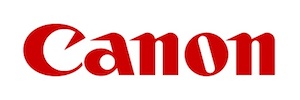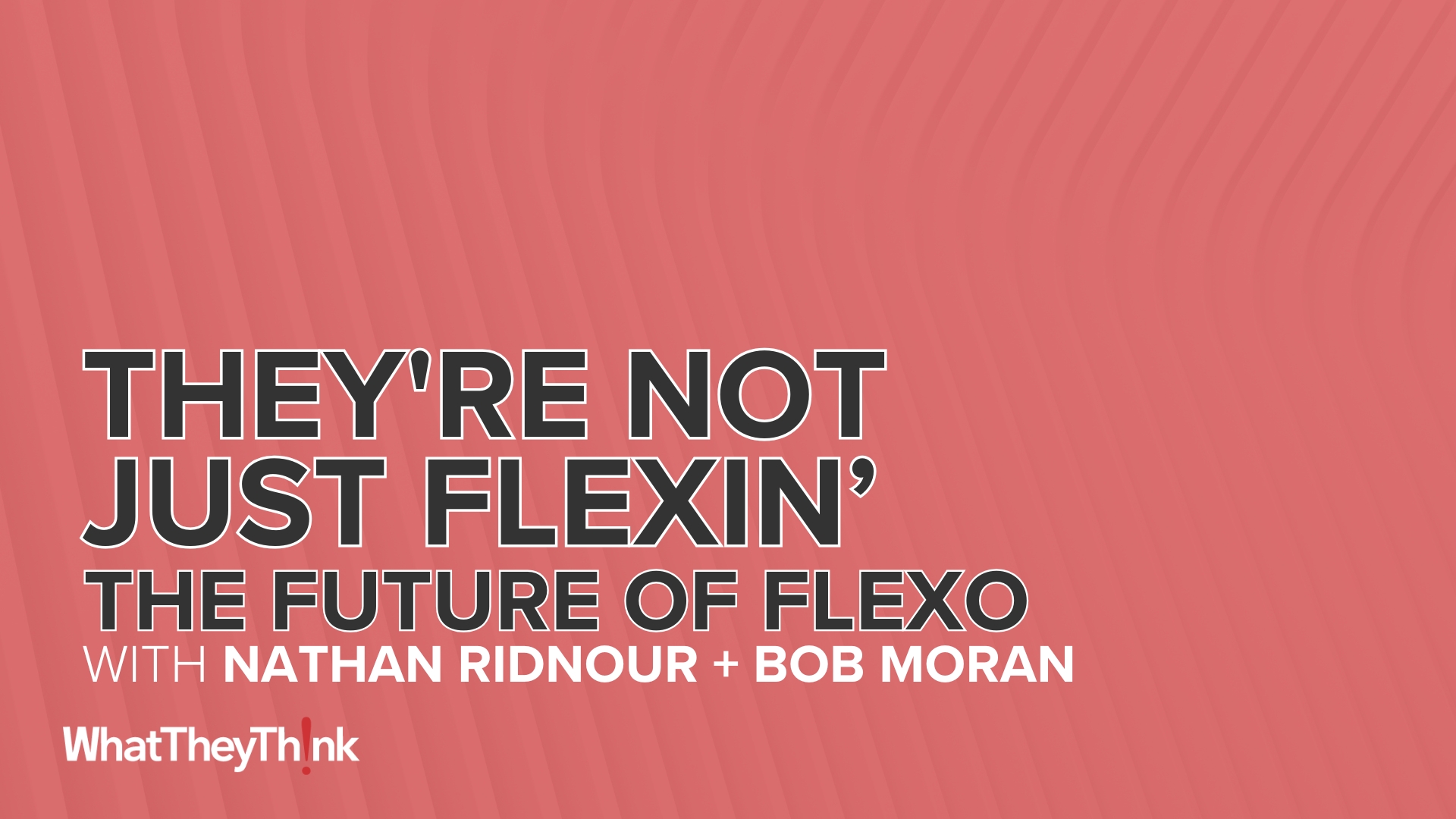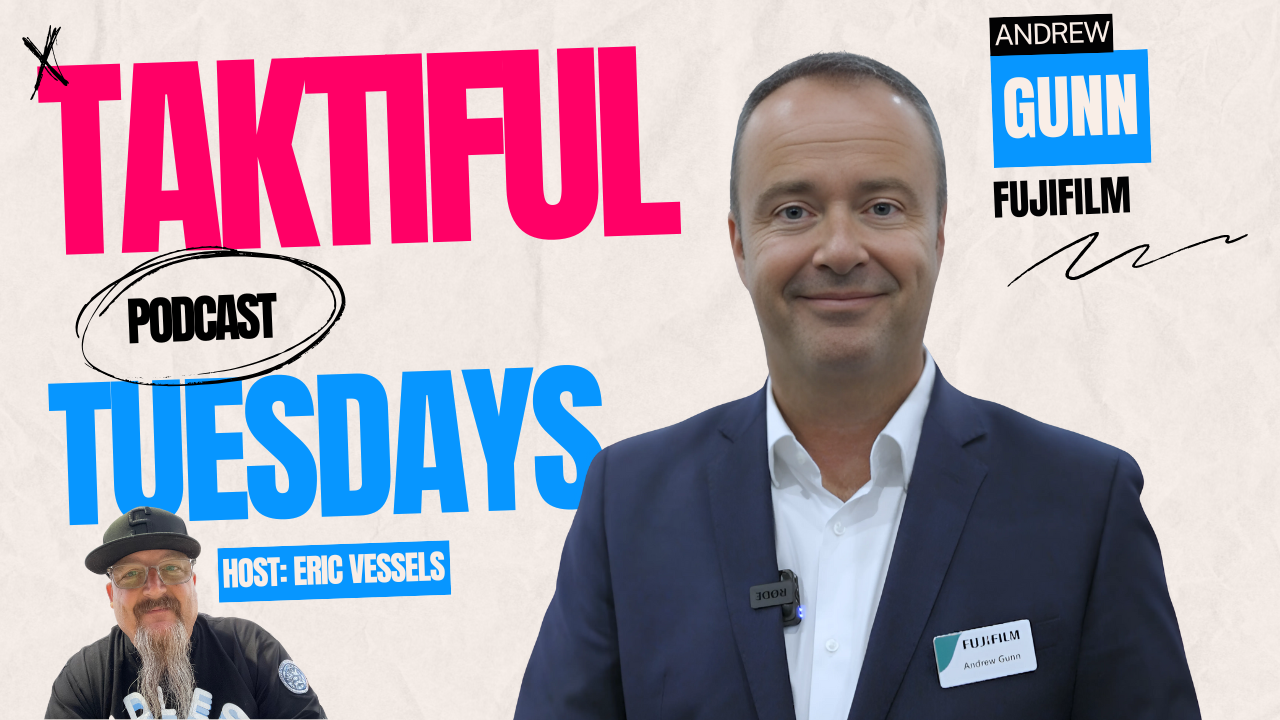Andy Tribute: Hello, this week I want to talk about the big event HP ran about its high speed ink jet web presses. They brought together the international analyst and press community to describe how successful they’ve been with the T series presses in a wide range of markets around the world. And following that, they then went on to talk about the new T400 wider format press.
This is a very impressive press, 42-inch wide web, the first at this sort of size, running at 600 feet a minute, which means around 5,000 A4 letter pages. The web can be split into then two 20-inch webs, more for a transactional market. It has a very high duty cycle of 140 million impressions a month and works at a higher resolution of 1200 DPI. The system is very much like a web offset press in many ways, but it allows easy access to all the parts. Here you see an operator working on the print heads. It uses the same approach on print heads of easy replacement, and these are higher speed print heads, as introduced in the T350. You can see here how easy it is to access and change a print head.
The system uses the same bulk ink system and while there are new inks, it’s CMYK plus HP’s unique bonding agent that allows you to use the standard, uncoated offset papers rather than special inkjet papers. The system has a duplex vision system that checks the webs for faults and allows correction to be done on the press and maybe surprising to be, it’s actually slightly smaller in length than the T300 and T350 presses, but wider. And here you see the full web running in full color.
I’d like to take some comments here that were on the HP website from one of the leading analysts who attended the event.
Jim Hamilton: Though I’m here in Los Angeles for the introduction of HP’s T400 inkjet web press and have just spent the day at O’Neil Data Systems, I’d like to make four points about the T400. We’re really looking at a new range of productivity. It can go 600 feet per minute, It has a duty cycle of 140 million and production capabilities that are well beyond what has been available, certainly in electric photography, but beyond what’s available in the inkjet market today.
And I think the volume of what has been produced by the installed base to date of the inkjet web press sites that are in existence, 1.6 billion impressions is really very impressive. Small number of units, large amount of volume will see that grow and it will be very impressive over time.
Also impressive are the productivity features that have been built into the device. Particularly if you’re a high volume production site running 42-inch webs, to be able to quickly splice and add new rolls and in fact to take old rolls off, and substrates is another area where HP has really done a lot of work. For uncoated substrates, of course you can use the bonding agent of the inkjet web press family series to print on a range of untreated, uncoated papers. But the color pro offerings are also expanding many new paper suppliers who are opening up new opportunities for higher quality on those color pro substrates. At the same time, you’re seeing development by HP, HP technology going into coded substrates. So expanding that substrate range really does build out the level of applications that can be done by this device. You’re really looking at new opportunities in the marketplace.
My recommendation to content providers, publishers, marketers, those creating transaction or financial documents, is to rethink what you think of color digital print today because a device like the T400 is changing that and opening up totally new opportunities, and ones we can’t even imagine today. So I think it’s a very exciting day to be here in LA, seeing what’s going on at O’Neil, where they have four of these devices, and I encourage you to look into this device and see what else you can learn about the opportunities for additional print.
Andy Tribute: So what can we expect the impact of this new T400 press to be? Well, first of all, I see this is going to move further into the offset market space. It looks like an offset press. It’s built like an offset press. And it’s aimed at the offset market place for books, particularly for newspapers, although we’ll have to wait for newspapers to happen, and I would say it’s probably going to be competitive against offset for book production in run length certainly up to 5,000, possibly 5-7,000, we’ll just have to wait and see just what those numbers are. It’s also very suitable for high volume, direct mail printing, and for direct transactional printing, particularly with the ability of being able to create 2 20-inch webs in one pass.
Quality is certainly as good as offset. Certainly, when I say as good as offset on uncoated stocks and on special optimized inkjet paper. So it competes very, very favorably against offset in those sort of spaces.
What we’re also seeing, is this is more and more like an offset press. It’s got new web handling systems for automating the web loading and unloading, rather than having more basic systems we’ve seen so far. It’s got better ink drive, so it can do more in terms of getting a quality with heavy ink coverage while running at high speeds.
So where does this fit? What is it going to be aimed at? You know, let’s just put it into context, first of all. This is not an offset killer. There’s a lot of rubbish talked about inkjet killing offset. As in terms of speed, this is the same speed in terms of pages per minute as Heidelberg’s top of the line 42-inch XL105 sheet-fed press. That’s a sheet-fed press, not a web press, same speed. And if you compare it with say a web-offset press, an equivalent web offset press, those presses are running at least two, more likely three times faster and having lower running costs when you’re up and running. So basically this fits into a market space that offset’s not so good at, where it really does fit very, very well.
So where does it go for future? Well, in summary, I think this is a fundamental, major market-changing product. It’s going to have a big impact, particularly with the book printers, who’ve been asking for this sort of product. I’ve spoken to many of them for over two years, I’ve known about the potential of this press coming for some time. But basically, the book printers who’ve been pre-briefed in many cases by HP on their future, have been wanting this press.
The transactional printers, the bigger transactional printers have been wanting this press. So it’s going to have a big impact on its customers, who see the real needs for this for growing the market space. It’s also going to have a big impact on HP’s competitors, because this is changing the market fundamentally. The type of product that’s aimed at the printers rather than presses that look more aimed at the transactional guys. So I think this is a big, big move from HP and widening their opportunities in the marketplace.
Thanks very much indeed, this is Andy Tribute.
WhatTheyThink Full Disclosure Statement: Our editors work with several companies within the industry and may have ongoing projects or discussions with companies named in videos. These companies play no role in the direction of these clips. The views expressed by our contributing writers are their own and may not reflect those of WhatTheyThink.com. WhatTheyThink.com may have formal business dealings with companies named in videos as well. However, these relationships play no role in the editorial content at this site. See our complete editorial policy.

 Official camera partner of WhatTheyThink and the drupa daily.
Official camera partner of WhatTheyThink and the drupa daily. 












